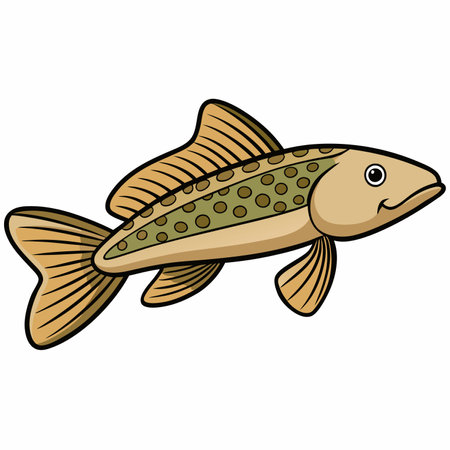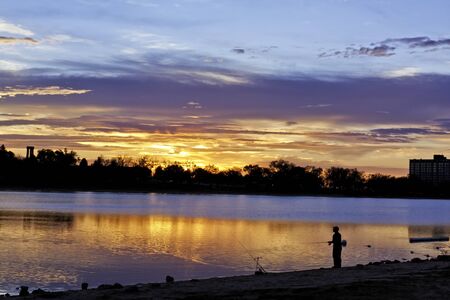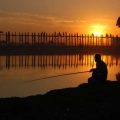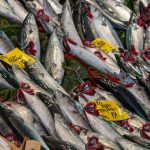1. Understanding Shoreline Erosion and Its Causes
Shoreline erosion is a natural process, but human activity—especially recreational fishing—can speed it up. When we fish along the banks of rivers, lakes, or coastal areas, our presence can impact the land in ways that arent always obvious. Let’s break down how shoreline degradation happens and what causes it.
How Fishing and Foot Traffic Affect the Shoreline
Repeated foot traffic in popular fishing spots can wear down vegetation and compact the soil. Without plant roots to hold the soil together, it becomes loose and more likely to wash away during rain or high water events. This damages ecosystems, ruins scenic areas, and can even make fishing less productive over time.
Main Factors Contributing to Shoreline Degradation
Here are some key ways that fishing activities can lead to shoreline erosion:
| Cause | Description | Impact on Shoreline |
|---|---|---|
| Soil Compaction | Walking over the same ground repeatedly packs down the soil. | Makes it harder for water to soak in, leading to increased runoff and erosion. |
| Vegetation Loss | Trampling plants or cutting paths through grassy or brushy areas. | Reduces root systems that stabilize soil, making it easier for dirt to wash away. |
| Water Runoff Patterns | Disturbed soil changes how rainwater flows across the land. | Can create gullies and channels that erode banks more quickly. |
Why This Matters
Eroded shorelines arent just an environmental issue—they also affect access for anglers, threaten fish habitats, and cost public agencies money to repair. By understanding these causes, we can all do our part to protect the places we love to fish.
2. Best Practices for Shoreline Fishing Access
Fishing from the shore is a favorite pastime for many anglers across the U.S., but how we access our favorite spots can make a big difference in preserving the environment and maintaining public lands for future generations. Here are some simple, responsible ways to access shoreline fishing areas without causing erosion or damaging natural habitats.
Use Designated Trails and Paths
Whenever possible, stick to marked trails or established paths when heading to your fishing spot. These paths are usually built to handle foot traffic and prevent erosion. Creating your own shortcut through grass, brush, or along steep banks can lead to soil erosion and destroy vegetation that helps stabilize the shoreline.
Why Designated Trails Matter
| Action | Impact |
|---|---|
| Using designated trails | Keeps foot traffic controlled, minimizes environmental damage |
| Cutting new paths | Causes erosion, destroys plant life, leads to long-term damage |
Avoid Fragile Shorelines and Eroding Banks
If you notice an area where the ground is crumbling or there’s exposed soil along the waters edge, avoid walking or fishing from that spot. These areas are especially vulnerable and need time to recover. Walking on them can speed up erosion and may even pose a safety risk if the bank collapses underfoot.
Spotting Fragile Areas
- Bare patches of dirt with no grass or plant cover
- Crumbling edges or undercut banks near the water
- Muddy trails that look like they’ve been heavily used off-path
Respect Private Property Boundaries
A lot of great fishing spots run alongside private land. Always be aware of property lines and look for signs indicating private ownership. Trespassing not only creates conflict with landowners—it also puts public access at risk if those owners decide to restrict entry due to misuse.
Tips for Staying Respectful
- If youre unsure whether an area is public or private, check with local authorities or use a reliable mapping app.
- If you see a “No Trespassing” sign, don’t cross it—even if it looks like a great fishing hole.
- If allowed, always pack out your trash and leave no trace—landowners appreciate responsible visitors.

3. Leave No Trace Principles for Anglers
When youre fishing from the shoreline, its important to enjoy the outdoors responsibly. One of the best ways to do that is by following the Leave No Trace principles. These simple guidelines help protect our natural spaces and keep public lands clean and healthy for everyone.
Proper Waste Disposal
Always pack out everything you bring with you. That includes snack wrappers, fishing line, bait containers, and even biodegradable items like fruit peels. Trash left behind not only looks bad—it can harm wildlife and pollute waterways.
Waste Management Tips
| Item | What to Do |
|---|---|
| Used fishing line | Store in a container or ziplock bag; recycle at a monofilament recycling station if available |
| Bait containers & packaging | Pack them out and dispose of them in a trash bin at home or near the parking area |
| Food waste | Even if it’s biodegradable, pack it out—it can attract wildlife and isnt natural to the area |
Avoiding Wildlife Disturbance
Wildlife is an essential part of the ecosystem. When fishing along shorelines, be mindful not to disturb animals or their habitats. Avoid nesting areas, don’t feed wildlife, and keep noise levels low. If you bring your dog along, make sure its leashed and under control.
Packing Out All Gear
Before leaving your fishing spot, do a full gear check. Make sure youve picked up all tackle, tools, chairs, coolers, and personal items. Leaving gear behind not only litters the area but can also pose safety risks to others and local wildlife.
Quick Gear Check Before You Go:
- Tackle box closed and packed
- No hooks or lures left on the ground
- Cans, bottles, and food wrappers collected
- All personal belongings accounted for
By keeping these Leave No Trace principles in mind while shoreline fishing, you’re helping preserve our lakes, rivers, and coastlines for future anglers—and for nature itself.
4. Using Proper Gear to Minimize Environmental Impact
When it comes to shoreline fishing, the gear you choose doesn’t just affect your catch—it also impacts the health of our public lands and waterways. By making thoughtful choices in your fishing equipment, you can help protect fragile shorelines from erosion and long-term damage.
Choose Footwear That’s Kind to Nature
Wading into rivers or along the shore is a part of many anglers routines. However, traditional wading boots with felt soles can trap invasive species and wear down natural surfaces. Instead, go for rubber-soled boots or those labeled as non-invasive. These are easier to clean and reduce the risk of spreading harmful organisms.
Footwear Comparison
| Type of Sole | Environmental Impact | Recommended Use |
|---|---|---|
| Felt Soles | High risk of spreading invasive species | Avoid in most U.S. states |
| Rubber Soles (Non-Invasive) | Low impact, easy to clean | Best for most shoreline environments |
| Cleated Rubber Soles | Good traction with minimal damage | Ideal for rocky or slippery areas |
Bring Lightweight and Collapsible Gear
Lugging heavy chairs, coolers, or tackle boxes over natural terrain can cause soil compaction and harm plant life. Opt for collapsible chairs and portable gear that leave less of a footprint on trails and shoreline vegetation.
Benefits of Collapsible Equipment
- Less Damage: Minimizes pressure on grassy or muddy areas.
- Easier Transport: Reduces the number of trips back and forth across sensitive terrain.
- Takes Up Less Space: Easier to store when not in use, keeping campsites cleaner.
Pack Smart and Reduce Waste
Your gear choices should also include how you handle trash and tackle. Use reusable containers for bait and snacks, avoid single-use plastics, and always pack out what you bring in. Consider using biodegradable line and lead-free weights to further reduce your environmental footprint.
Eco-Friendly Tackle Tips:
- Use circle hooks to reduce injury to fish.
- Select non-toxic sinkers made from tin or steel instead of lead.
- Avoid artificial baits with plastic additives that can pollute water bodies.
Every choice matters when youre fishing along America’s beautiful shorelines. By selecting the right gear, you’re not only improving your own experience—you’re also helping preserve these public lands for future generations of anglers.
5. Getting Involved in Conservation Efforts
As anglers, we all love spending time at our favorite fishing spots along lakes, rivers, and coastlines. But keeping these areas healthy and beautiful takes more than just following the rules—it also means giving back when we can. Getting involved in conservation efforts is a great way to protect the public lands we enjoy while connecting with other like-minded folks in the fishing community.
Why Your Help Matters
Over time, popular shoreline fishing areas can suffer from erosion, litter, and damage to natural habitats. While practicing responsible fishing helps reduce personal impact, participating in local conservation projects goes a step further by actively improving these environments. Every bit of help counts, and your involvement can make a big difference.
Ways to Get Involved
There are several simple and rewarding ways anglers can pitch in to support shoreline conservation:
| Conservation Activity | How It Helps |
|---|---|
| Shoreline Cleanup Events | Removes trash and debris that pollute the water and harm wildlife. |
| Habitat Restoration Projects | Rebuilds native plant life and stabilizes shorelines to prevent erosion. |
| Joining Local Conservation Groups | Supports ongoing efforts through organized advocacy and education. |
How to Find Opportunities Near You
You don’t have to look far to find ways to help. Many state parks, fish and wildlife departments, and environmental nonprofits host regular volunteer events. Check their websites or social media pages for upcoming projects. Some fishing clubs also team up with conservation groups—ask around at your local tackle shop or community center.
Tip: Bring a Friend!
Volunteering is even better when you bring someone along. Invite your fishing buddy or family members to join you—it’s a fun way to spend time together while doing something good for the environment.
The next time youre heading out with your rod and reel, consider setting aside some time to give back. Whether its picking up trash after a day on the water or planting native grasses near your favorite spot, your actions help keep our shorelines healthy for everyone.


